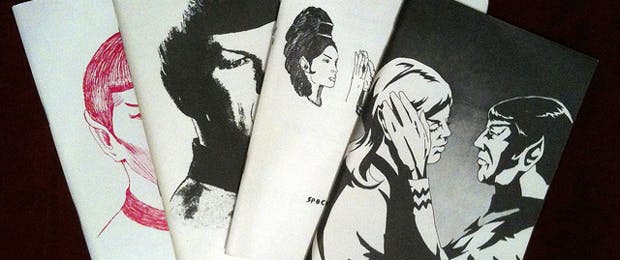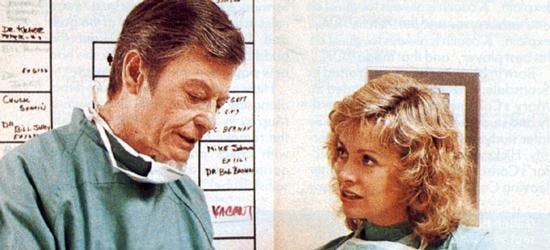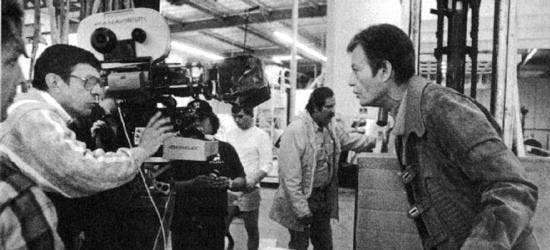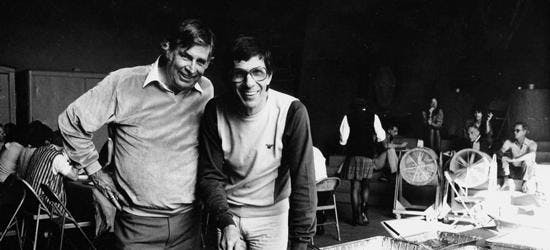Published Oct 20, 2014
Spockanalia -- The First Star Trek Fanzine
Spockanalia -- The First Star Trek Fanzine

In 1968, Gene Roddenberry called it “required reading” and he communicated that it was given to “every new writer, and anyone who makes decisions on show policy.” What was this influential it? Spockanalia, the first all-Star Trek fanzine.

In the era before blogs and websites, fan-written magazines were an important source of information and an outlet of expression for fans. Today, it is not uncommon for writers, producers and actors of television shows and movies to interact with fans via the Internet, or to use websites/discussion boards as a way to understand what audiences may be thinking. Back in the 1960s, however, Roddenberry was a pioneer in recognizing the importance of directly interfacing with television fans, and Spockanalia served an important function in that process. Indeed, Spockanalia’s pages included letters from the actors (sometimes written in character), creator Gene Roddenberry and writer D.C. Fontana which provide today gems of trivia and history for those revisiting the fanzine.
The first issue of Spockanalia appeared in September, 1967, sporting cover art of its eponymous character. Edited by Devra Langsam and Sherna Comerford, Spockanalia would run five issues during its three-year history. Some of the contributors, such as Jean Lorrah and Allan Asherman, would go on to have professional writing credits in the world of licensed Star Trek publishing.
While most of the content of Spockanalia was original stories, poetry, art and commentary by fans, perhaps the most significant historical contributions were by those who made the show. Roddenberry himself wrote letters and good wishes to the editors of Spockanalia and provided copies to his staff as the quotes that started this article indicate.

The second issue from April, 1968, includes a diary of sorts by Star Trek writer and story editor D.C. Fontana that answers queries from the editors and offers some wonderful insight into the character of Spock. Fontana famously wrote “Journey to Babel,” which introduced Spock’s parents and “Yesteryear,” the animated episode that delved into Vulcan culture through Spock’s experiences as a boy.
Of Spock’s family, Fontana wrote that, “Both his mother and father have been married only once to each other. Spock is an only child… There are absolutely NO other siblings” (page 10). Star Trek V: The Final Frontier tried to maintain this long-held idea by having Sybok be Spock’s half-brother, and the film reveals that even Captain James T. Kirk himself had been certain that Spock didn’t have a brother. Fontana also reveals that Spock is 36 years old.
Arguably the most interesting bit of trivia is the revelation that Fontana projected Spock’s first name to be “XTMPRSQZNTWLFB” (page 10). She also explains that “the phonetic rendering according to pronunciation has nothing to do with the written language.” (Jane Wyatt, who played Spock’s mother Amanda Grayson, reportedly once joked that Spock’s first name was Harold -- and some of the novels have used the name S'chn T'gai Spock).

Fontana also shared that DeForest Kelley was a great influence on how she wrote for the character of McCoy, noting that “Most of the things I put into scripts about McCoy are the result of conversations I’ve had with him about the character” (page 11).
In that same issue, several of the actors including James Doohan, Kelley and Leonard Nimoy, all wrote to the editors in character. These letters are important because they help reveal something about what the actors thought about the characters they played while in the middle of the actual production of the show.
Kelley, writing as McCoy on October 30, 1967, calls Spockanalia “bright, witty, and informative” (page 15). Kelley details the Doctor’s views of space medicine, writing in character: “space medicine I can take, even though computers have removed a great deal of the mental challenge and true personal discovery” (page 15). Of Spock, Kelley/McCoy writes, “what the blazes do I know about Vulcans? I reach for his heart and come up with his liver – his blood is green as well as an indelible stain. I recently brought aboard a young Dr. M'Benga (who interned in a Vulcan hospital) to get Spock off my back. I can't be bothered with rubbing my nerves raw about a physical jigsaw. I have enough problems without taking on all of Spock's peculiarities, mental or physical. He is capable of undoing every single thing I have learned in all my years of medical training - and I don't intend to let him do it. I have warned Captain Kirk that one more Vulcan aboard our ship - just one more - and I will resign from the service” (page 15).

Appearing on the next page is a response from Leonard Nimoy, writing as Spock. Dated December 28, 1967, Nimoy/Spock writes that “I have read with interest Dr. McCoy’s comments on Space Medicine and particularly his complaints about having to treat a Vulcan. If you can imagine what it would be like to have a toothache treated by a screaming witch-doctor, shaking ancient instruments and yelling unintelligible incantations, you have some idea of what a Vulcan experiences when treated by the ship’s surgeon” (page 16).
The January 28, 1968, edition of the Pasadena’s Independent Star News newspaper carried a syndicated column called “Tele-Talk” which covered the looming cancellation of Star Trek after its second season that was ultimately avoided. The article discusses how Star Trek had recently been “chosen by both youngsters AND adults as their favorite series” in a poll by TV Week magazine. The article questioned the reason for the disparity between the ratings of the show and its obvious appeal among fans of differing generations. The article went on to report on the Cal Tech students and faculty who protested Star Trek’s possible cancellation outside NBC studios.

Germaine to Spockanalia, the article features quotes by Roddenberry about how fans are so passionate about Star Trek that they have created fanzines: “Roddenberry says that there exists a whole underground science-fiction culture in this country, and that there is an entire magazine devoted to Spockanalia – centering on Mr. Spock of Star Trek (Leonard Nimoy) and the culture of the Vulcanites (Spock comes from the planet Vulcan). 'They even write poetry about it,' says Roddenberry, 'and some of it is very good.' NBC – are you listening?”
That Gene Roddenberry was utilizing Spockanalia as an example of the show’s popularity in national interviews is revealing about the fanzine’s place in Trek history. Spockanalia was included in an exhibit about Star Trek at the University of Iowa Library during 2009, which celebrated both the work of Nicholas Meyer (who donated his papers to the University) and the history of Star Trek itself. The pages of Spockanalia’s first few issues give a peek at what fandom was like during the 1960s, into the important role that female fans played as pioneers of fandom, into the creativity of fans, and also into what those behind the scenes and in front of the camera thought of the characters and the fans themselves.

_________Maria Jose and John Tenuto are both sociology professors at the College of Lake County in Grayslake, Illinois, specializing in popular culture and subculture studies. The Tenutos have conducted extensive research on the history of Star Trek, and have presented at venues such as Creation Conventions and the St. Louis Science Center. They have written for the official Star Trek Magazine and their extensive collection of Star Trek items has been featured in SFX Magazine. Their theory about the “20-Year Nostalgia Cycle” and research on Star Trek fans has been featured on WGN News, BBC Radio, and in the documentary The Force Among Us. They recently researched all known paperwork from the making of the classic episode "Space Seed" and are excited to be sharing some previously unreported information about Khan's first adventure with fellow fans. Contact the Tenutos at jtenuto@clcillinois.edu or mjtenuto@clcillinois.edu.

